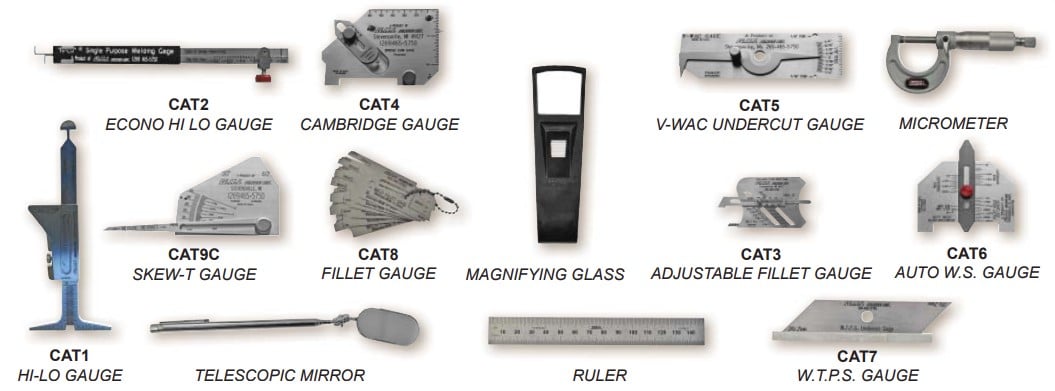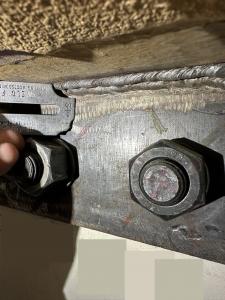Navigating Welding Inspection Gilbert Arizona: Vital Insights for Market Professionals
Navigating Welding Inspection Gilbert Arizona: Vital Insights for Market Professionals
Blog Article
Exploring the Importance of Welding Examination in Industrial Applications: Protecting Against Failures and Enhancing Long Life
Welding examination serves as a critical line of protection in commercial applications, making certain the structural honesty and integrity of bonded components. By methodically recognizing defects such as porosity and incomplete fusion, evaluations not just stop failings however also extend the life-span of vital assets.
Role of Welding Evaluation
Welding evaluation works as a vital secure in commercial applications, guaranteeing that bonded frameworks satisfy defined criteria of top quality and safety. This procedure includes a methodical examination of welds to confirm their stability, stamina, and conformity with well-known codes and specifications. The role of welding evaluation is diverse, encompassing both aesthetic evaluations and non-destructive screening methods, which might consist of ultrasonic, radiographic, or magnetic bit screening.
Reliable welding assessment identifies prospective issues early, reducing the risk of catastrophic failings that can occur from poor welds. By making certain that welds are performed according to develop requirements, assessors contribute to the overall architectural reliability and longevity of parts in vital applications, such as pressure vessels, pipelines, and architectural structures.

Typical Welding Flaws

One of the most widespread defects is porosity, defined by small gas pockets entraped within the weld steel. This takes place because of impurities or incorrect protecting gas, jeopardizing the weld's stamina. Another significant issue is incomplete combination, where the weld steel stops working to bond appropriately with the base product, potentially leading to structural weak points.

Cracks can likewise develop throughout or after the welding procedure, typically credited to thermal stress and anxieties or incorrect cooling prices. Furthermore, undercutting, where the base metal is deteriorated along the weld bead, can deteriorate the joint and is commonly brought on by excessive warmth input or inaccurate strategy.
Furthermore, lack of infiltration occurs when the weld metal does not reach the origin of the joint, bring about inadequate strength. Recognizing these common issues is important for inspectors and welders alike to ensure that bonded frameworks satisfy safety and security and efficiency criteria, eventually avoiding possible failings in industrial applications.
Benefits of Regular Inspections
Normal examinations act as a vital protect in ensuring the reliability and longevity of welded frameworks. These analyses identify possible problems and weak points that may jeopardize the honesty of welds, permitting timely remediation prior to problems escalate. By executing an organized evaluation regimen, organizations can dramatically lower the threat of tragic failings that may result in costly downtime, tools replacement, or even crashes.
Furthermore, regular evaluations add to boosted quality assurance throughout the welding check process. By adhering to a regular examination timetable, companies can make certain that their welding methods meet well-known quality standards and ideal methods. This not only promotes a society of liability but additionally urges continual improvement among welding employees.
Additionally, normal examinations assist in much better upkeep preparation. By recognizing deterioration early, organizations can purposefully schedule substitutes and repair work, minimizing disturbance to operations. This positive approach ultimately results in extensive possession life-span and improved overall productivity.
Last but not least, a commitment to normal assessments can enhance a company's track record in the industry. Customers and stakeholders significantly worth companies that prioritize safety and high quality, consequently enhancing trust fund and potentially bring about increased business possibilities.
Sector Standards and Laws
Abiding by market criteria and laws is an essential facet of welding inspection that matches the advantages of normal assessments. These criteria, established by organizations such as the American Welding Society (AWS) and the American Culture of Mechanical Engineers (ASME), provide a structure for best practices in welding procedures, products, and assessment techniques. Conformity with these guidelines guarantees that welds fulfill the required quality and security standards, dramatically lowering the danger of architectural failures.
Regulative bodies like the Occupational Safety and Health Administration (OSHA) even more enforce standards that safeguard employees and the setting during welding operations. By following these developed requirements, markets can improve the reliability of their structures and elements, guaranteeing they execute as meant under different operational problems.
In addition, adherence to sector standards promotes consistency in high quality control, assisting in smoother communication among stakeholders and governing agencies. This alignment not only decreases obligation dangers however additionally enhances the reliability of Recommended Site organizations in competitive markets. Welding Inspection Gilbert Arizona. Ultimately, conformity with welding standards and policies is not just a lawful obligation; it is an essential investment in safety, performance, and lasting operational success
Future Trends in Welding Examination
As industries remain to progress, the future of welding inspection is poised to integrate advanced technologies that enhance precision and efficiency. One of one of the most significant fads is the fostering of automation and robotics in evaluation processes. Automated systems can carry out assessments rapidly, decreasing human error and enhancing throughput in producing environments.
In addition, the integration of expert system (AI) and device knowing formulas will enable predictive analytics, permitting real-time analyses and aggressive maintenance. By analyzing information from previous examinations, these technologies can recognize patterns that could show potential failures, consequently expanding the lifespan address of welded components.
Additionally, non-destructive testing (NDT) strategies are expected to become more sophisticated, making use of devices such as drones and independent vehicles outfitted with advanced sensing units. Welding Inspection Gilbert Arizona. These advancements will certainly boost the capacity to examine hazardous or hard-to-reach areas without compromising safety
In addition, the fad in the direction of digitalization will cause improved data monitoring systems that promote far better tracking, reporting, and conformity with industry standards. In recap, the future of welding examination is characterized by technical innovations that promise to dramatically enhance integrity, safety and security, and functional performance in numerous commercial applications.
Verdict
To conclude, welding inspection serves an essential function in making certain the stability and durability of bonded frameworks throughout various commercial applications. By determining defects such as porosity and insufficient combination, normal assessments play a substantial function in risk mitigation and top quality assurance. Adherence to industry criteria and regulations further enhances operational safety and security and reliability. As improvements in technology remain to advance, the future of welding examination guarantees boosted precision and efficiency, inevitably adding to the longevity of critical facilities.
Welding evaluation serves as a crucial line of protection in commercial applications, ensuring the structural stability and integrity of bonded parts.Welding inspection serves as an important secure in commercial applications, making sure that bonded structures fulfill defined criteria of quality and safety. Ultimately, the duty of welding assessment is important in promoting safety, enhancing efficiency, and protecting financial investments in commercial framework.
These requirements, established by organizations such as the American Welding Culture (AWS) and the American Society of Mechanical Engineers (ASME), offer a structure for ideal methods in welding processes, materials, and assessment techniques.In final thought, welding examination serves an essential function in making sure the integrity and sturdiness of welded structures across various commercial applications.
Report this page